3D N1 Dual
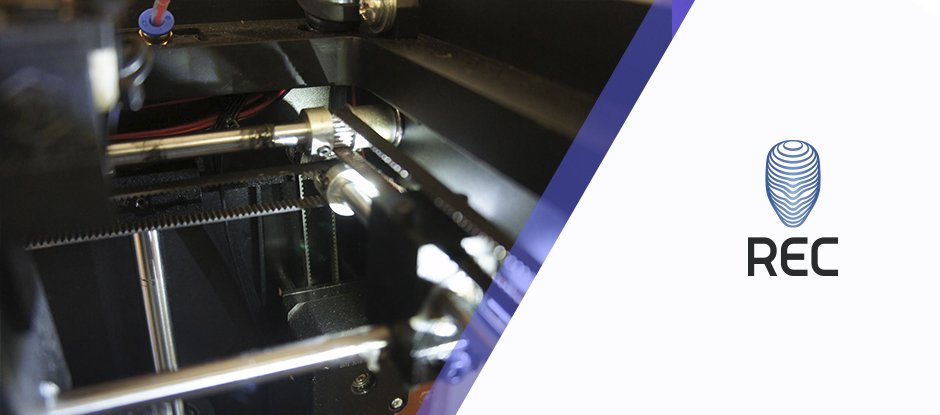
General Information
1. The external dimensions are 362х529х651 mm.
2. The printable area is rectangular, 205x205x205 mm.
3. Weight is 22 kg (as stated, we did not measure, but it seems easier).
4. The maximum speed of moving the head is 150 mm / s.
5. The minimum layer is 0.01, the base nozzle is 0.4 mm.
6. Includes thermostable, color touch screen LCD with its own interface, removable mounting frames for reels, 4 usb.
7. It is stated by the manufacturer that Raise 3D prints a lot of polymers and can heat the extruder to 300 degrees.
Packing and packaging
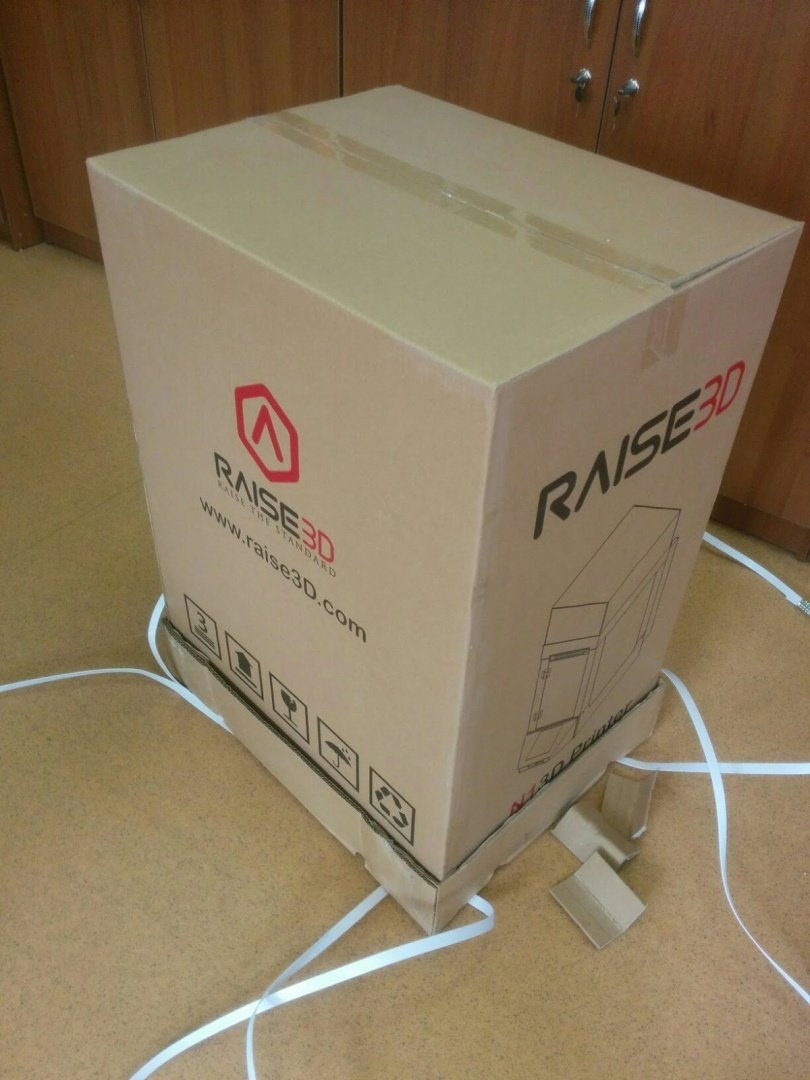

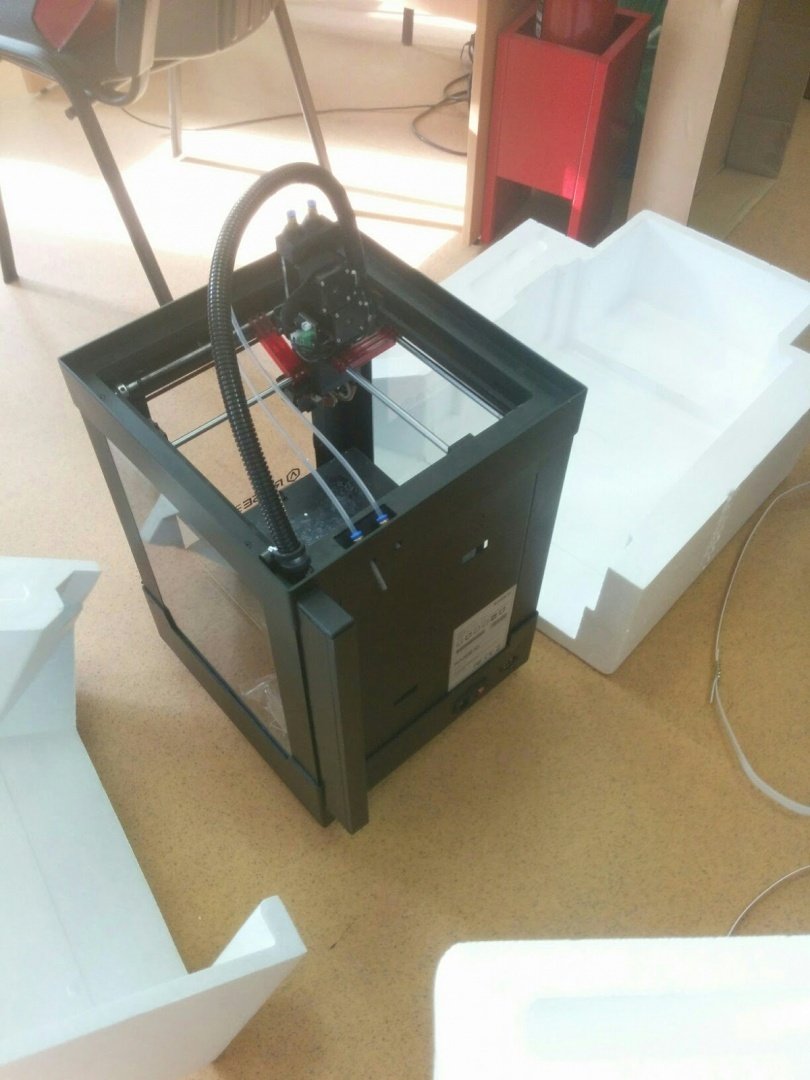
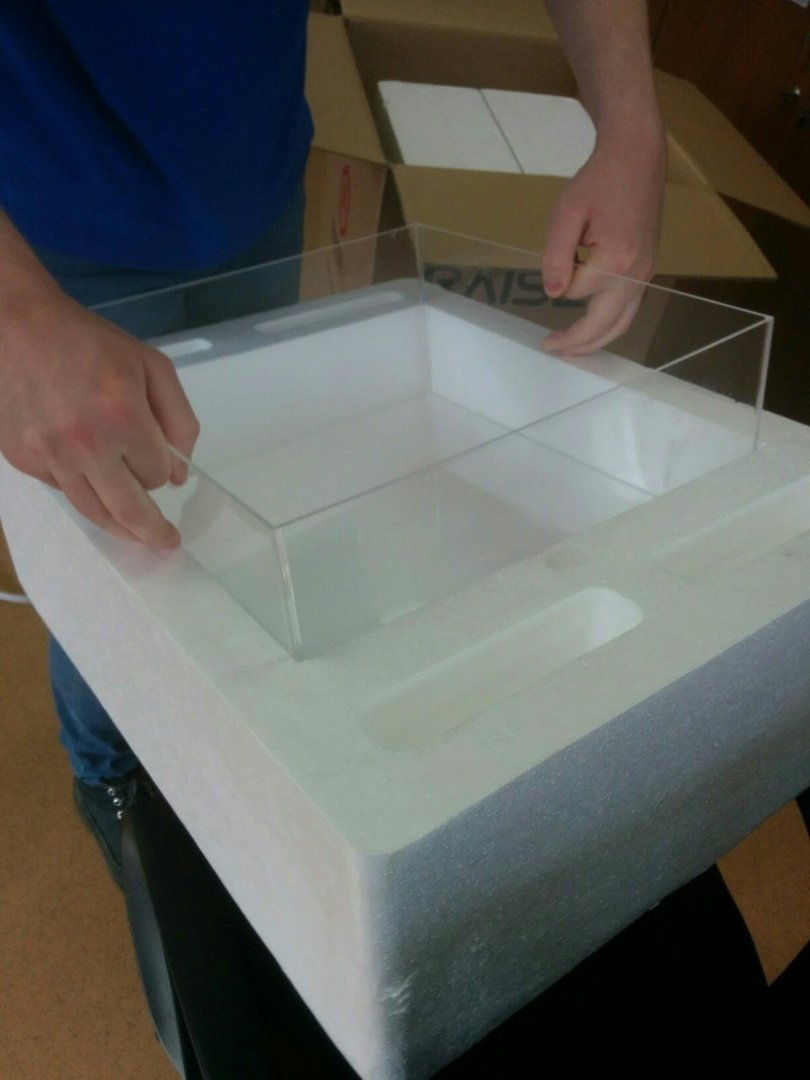
The printer is packed really well. Large pieces of foam, which reliably protect the printer.
The kit includes an excellent instruction, two branded holders for coils, a power cable, a flash drive, two plastic coils, a set of hexes, and a couple of nice little things.
Appearance and technical details
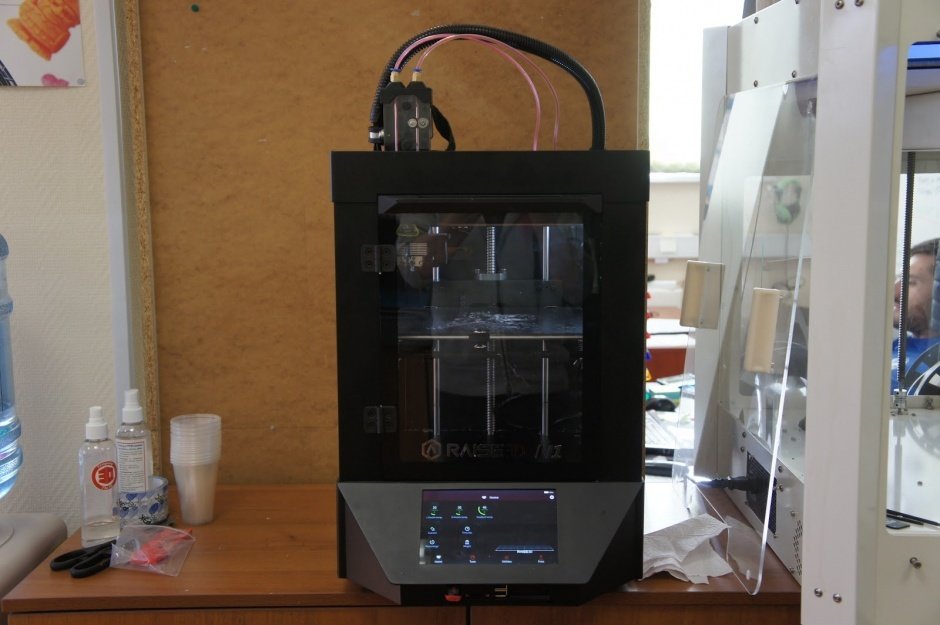
The printer has a very aesthetic, sturdy and rigid body.
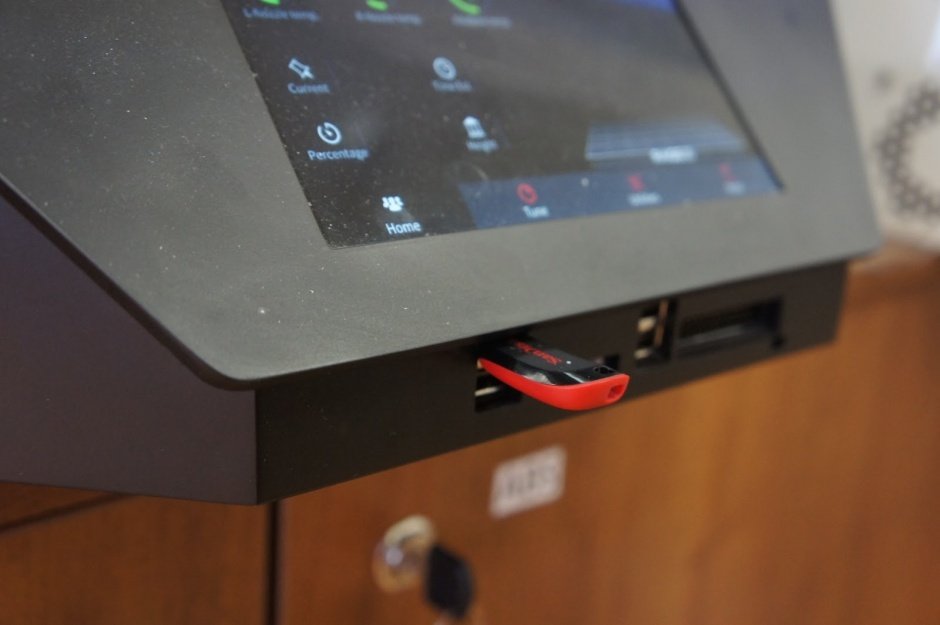
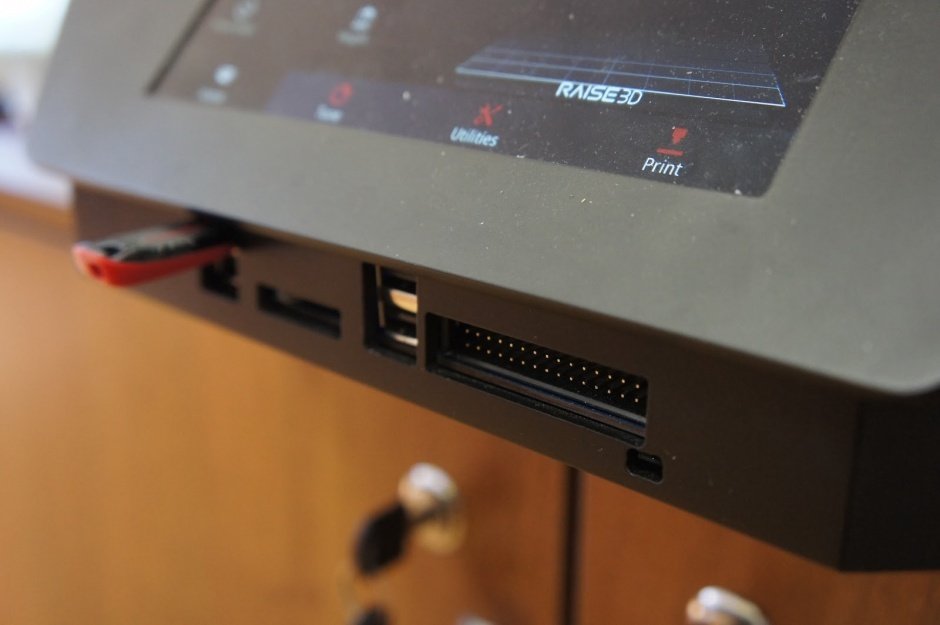
The instrument panel and connectors are conveniently located for the user.
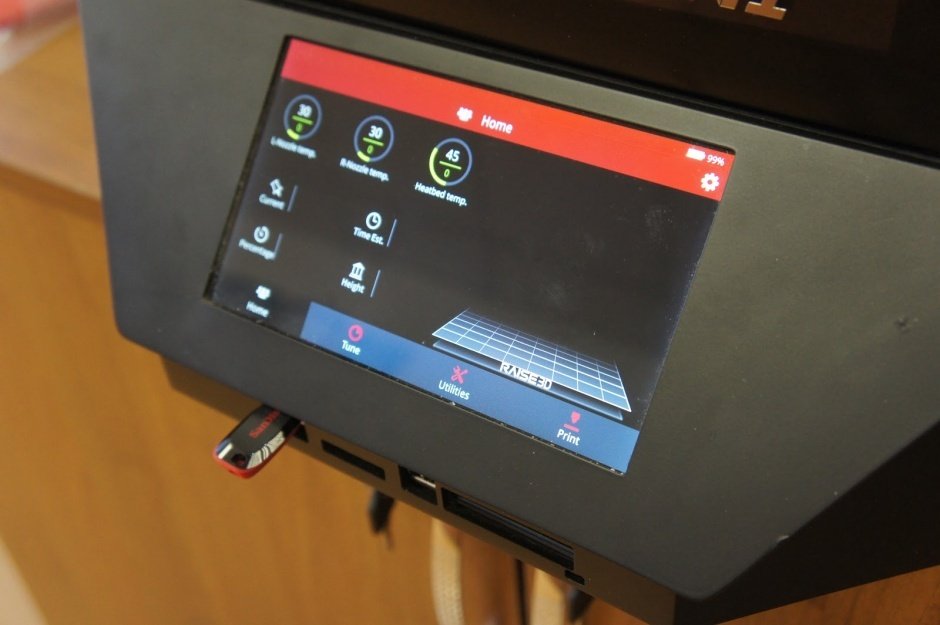
Touch screen with clear and stylish design. For newcomers of 3D printing, this solution will be extremely convenient.

It displays the process and printing settings, impressive.
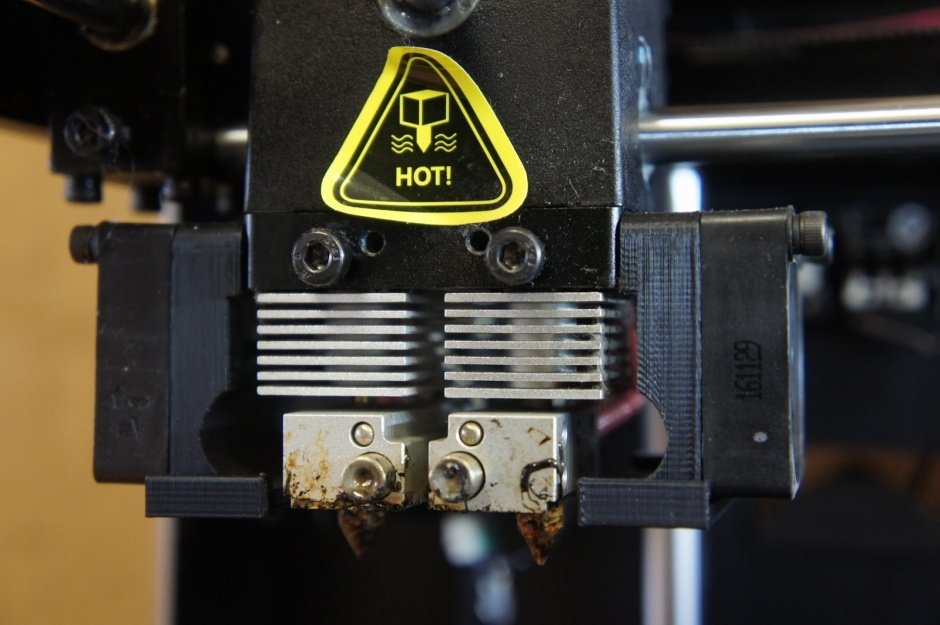
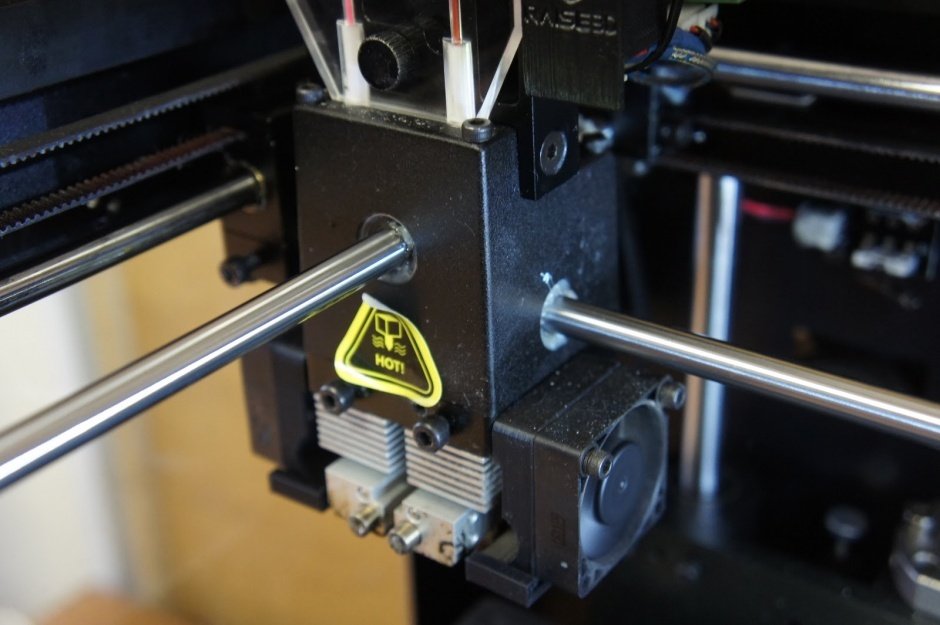
Two parallel extruders – many say such a scheme is “dead” and, as a rule, does not work. Verify.
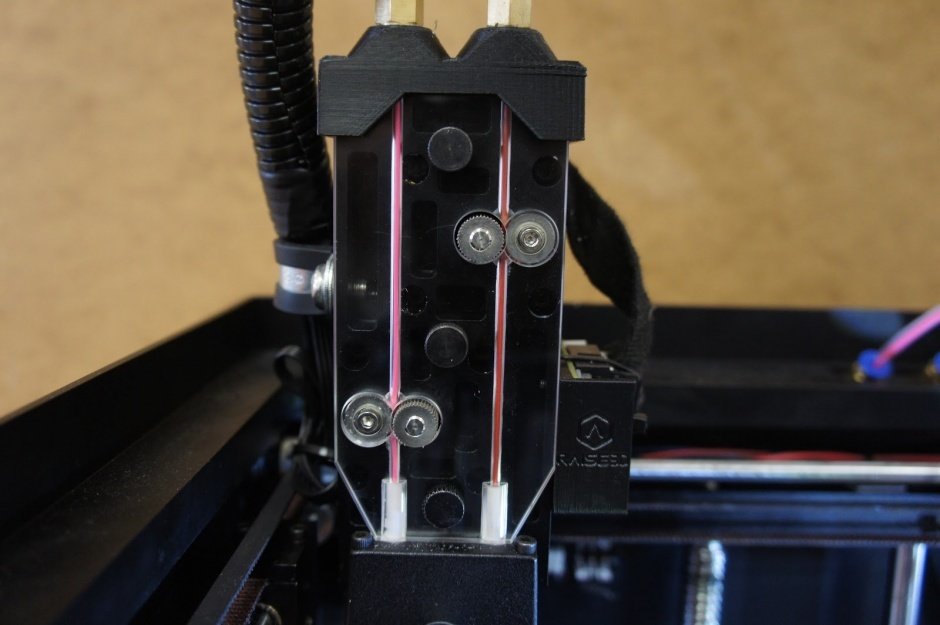
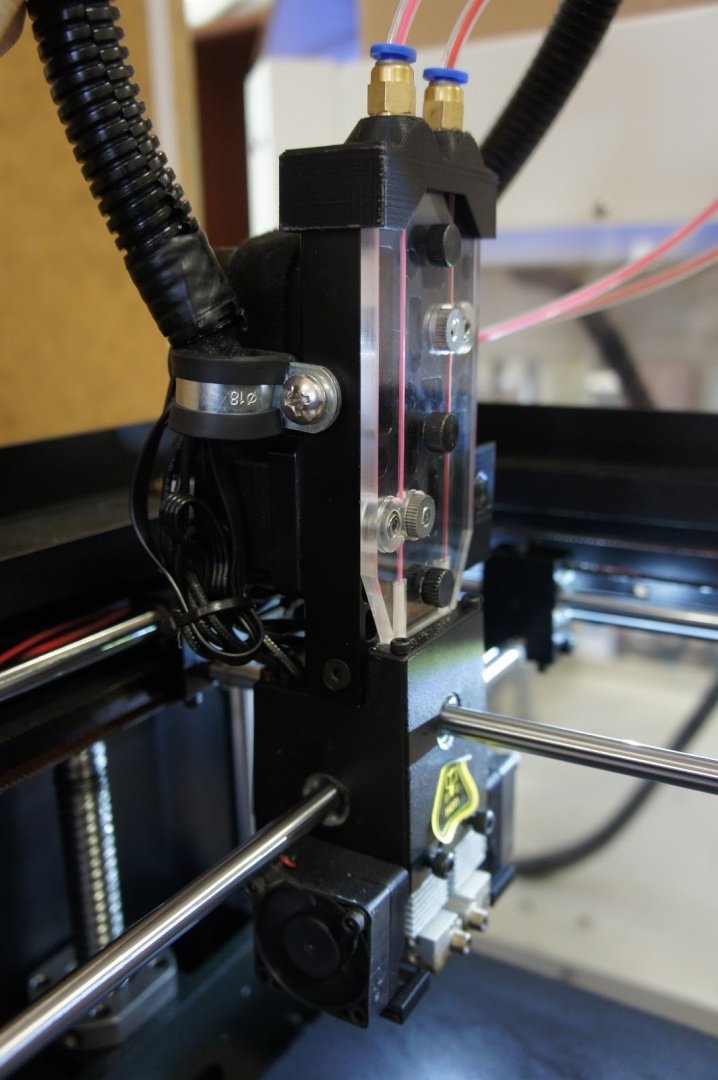
The print head resembles the head of Ultimaker, with one exception, the push mechanism is on it, in addition, in it A “rectifier” for the rod was created. This creates a more confident and precise feeding of the rod into the hotdening by reducing the strain of the filament due to bending.
The first impression of the piled-up motors is not the best idea.
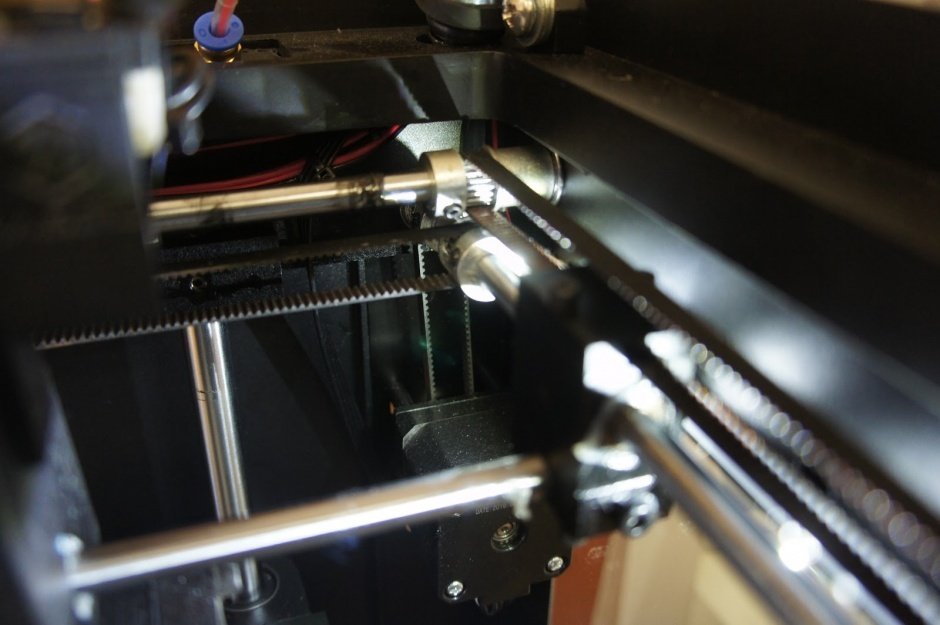
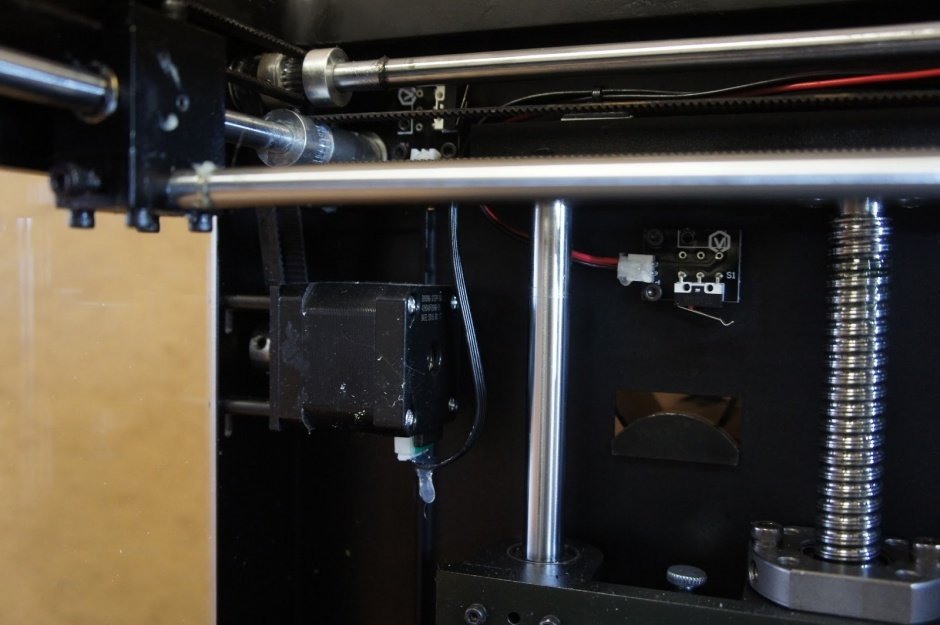

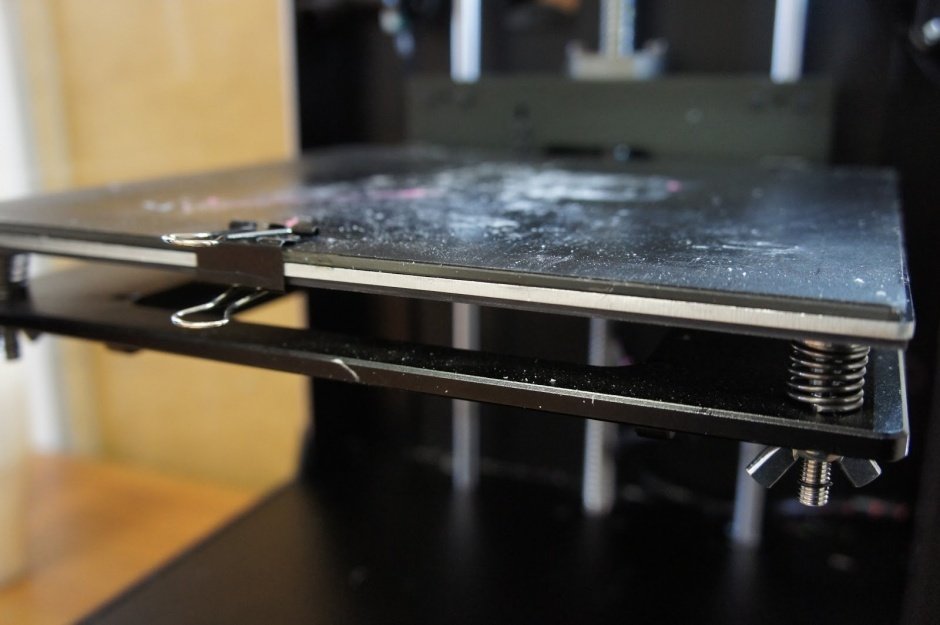
As for the kinematics – this Cartesian scheme is executed well and again copies Ultimaker. A lot of good components and custom parts made of metal and cast plastic.
As for the table itself, it is located on sufficient shafts and swabs. It does not lyuftit and does not bend.
The table is regulated by four bolts – not very cool, but classic.
PO
The program is called IdeaMaker – comes with a printer or is downloaded from the manufacturer’s website. It’s a little more complicated than Cura on the interface, but it’s easy to understand. Very pleased with the ability to quickly and conveniently visualize the printing process.
If necessary, you can use another slicer and fill the g-code with the ideal maker, but we did not test this functionality.
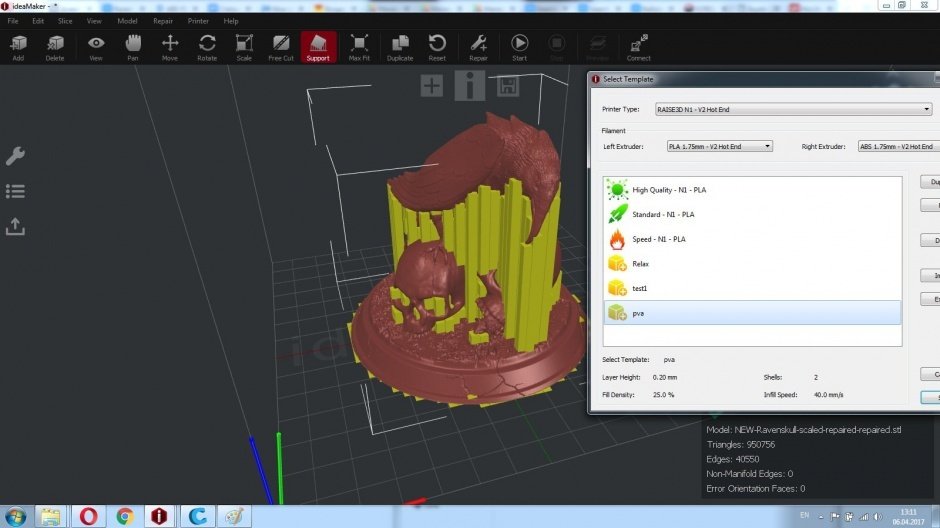
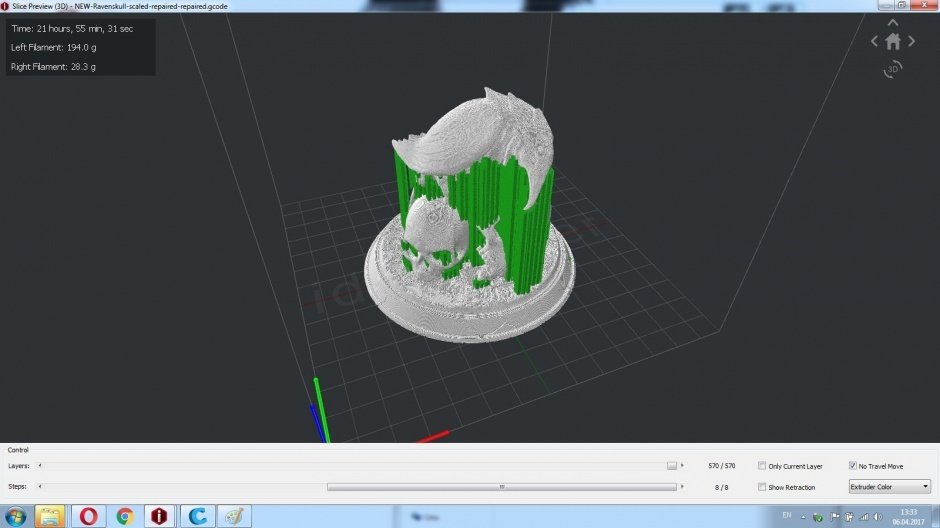
The press [
REC ABS and RELAX. These are the very first attempts at printing on this device:
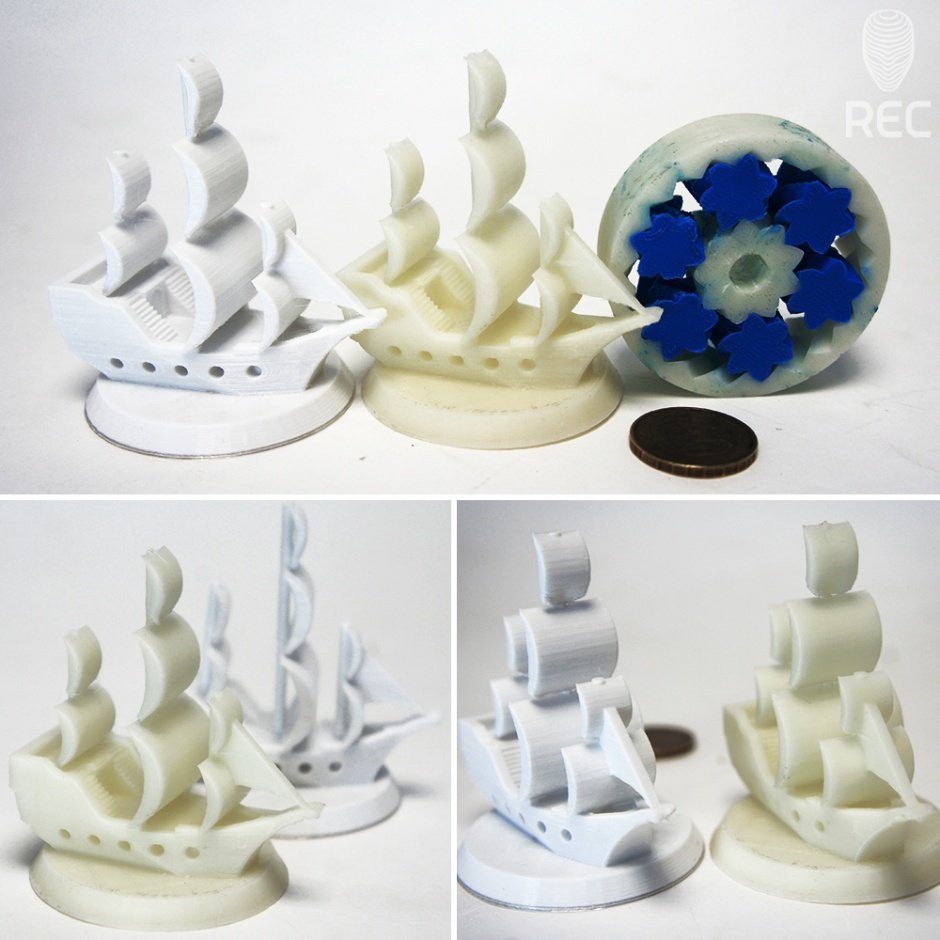
layer 0.15 mm
REC PLA
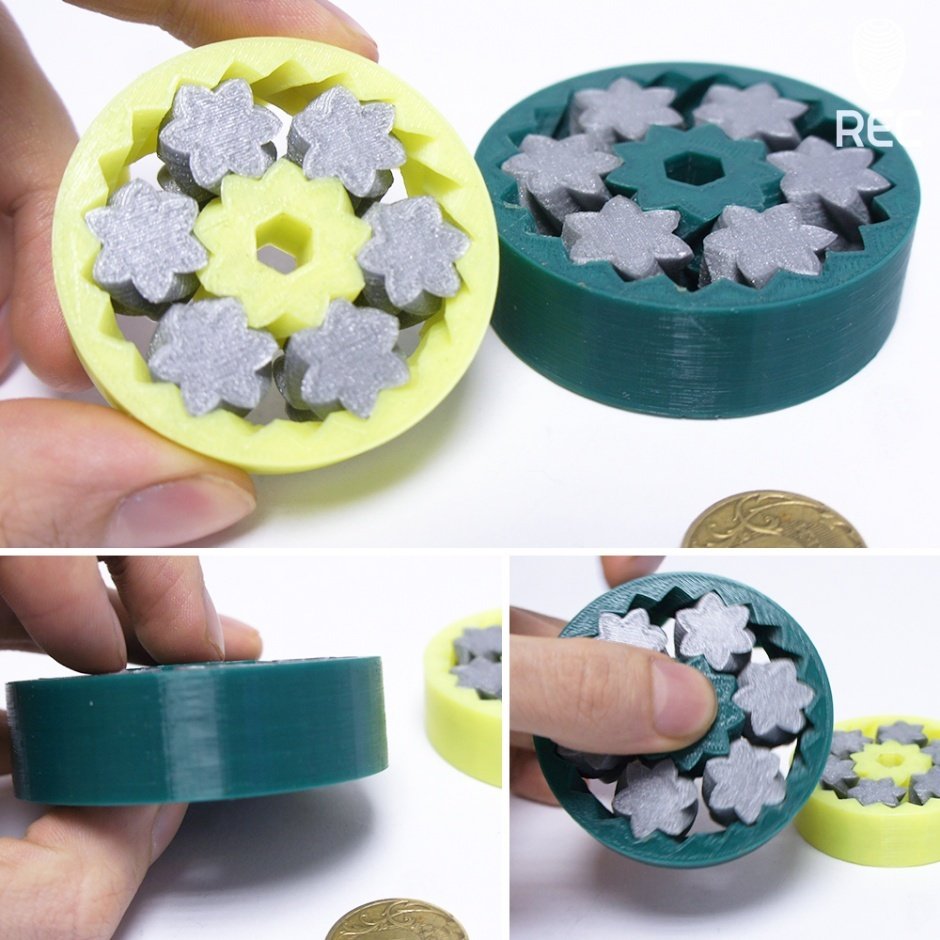
0.1 mm layer, problems with deposition of different materials in the temperature regime did not arise
REC FLEX
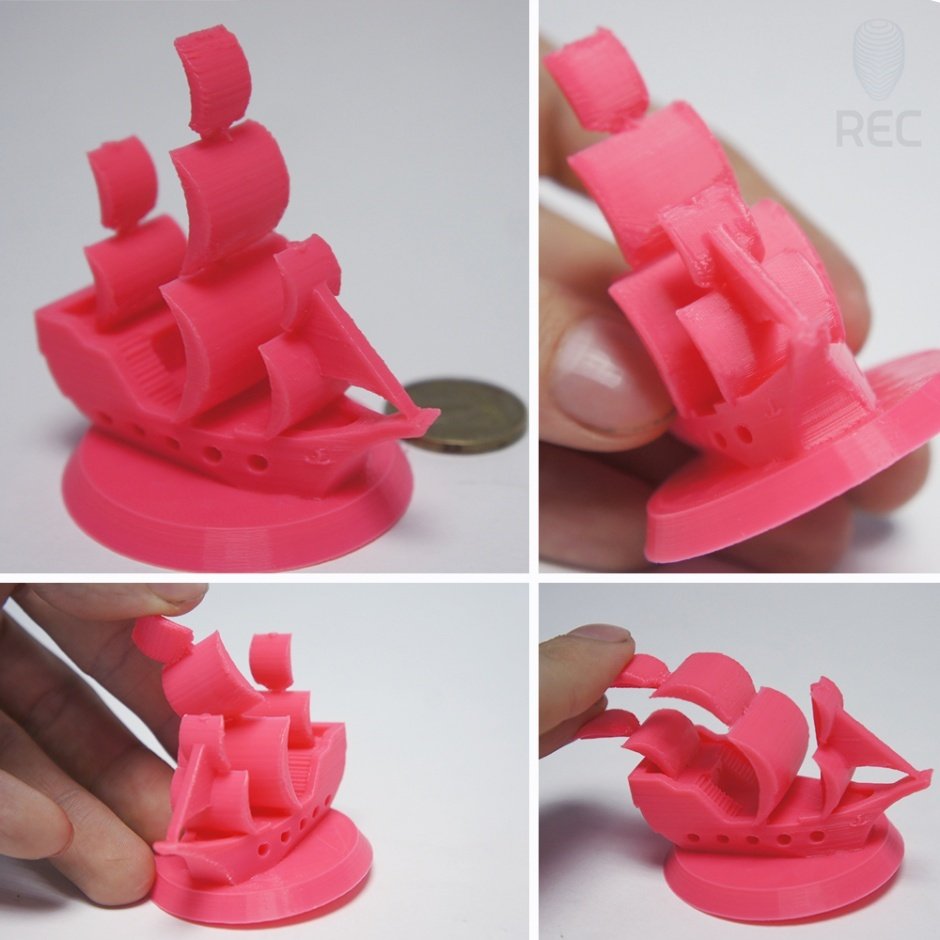
The result of Flex exceeded expectations, the height of the layer is 0.15 mm
REC ABS + REC HIPS
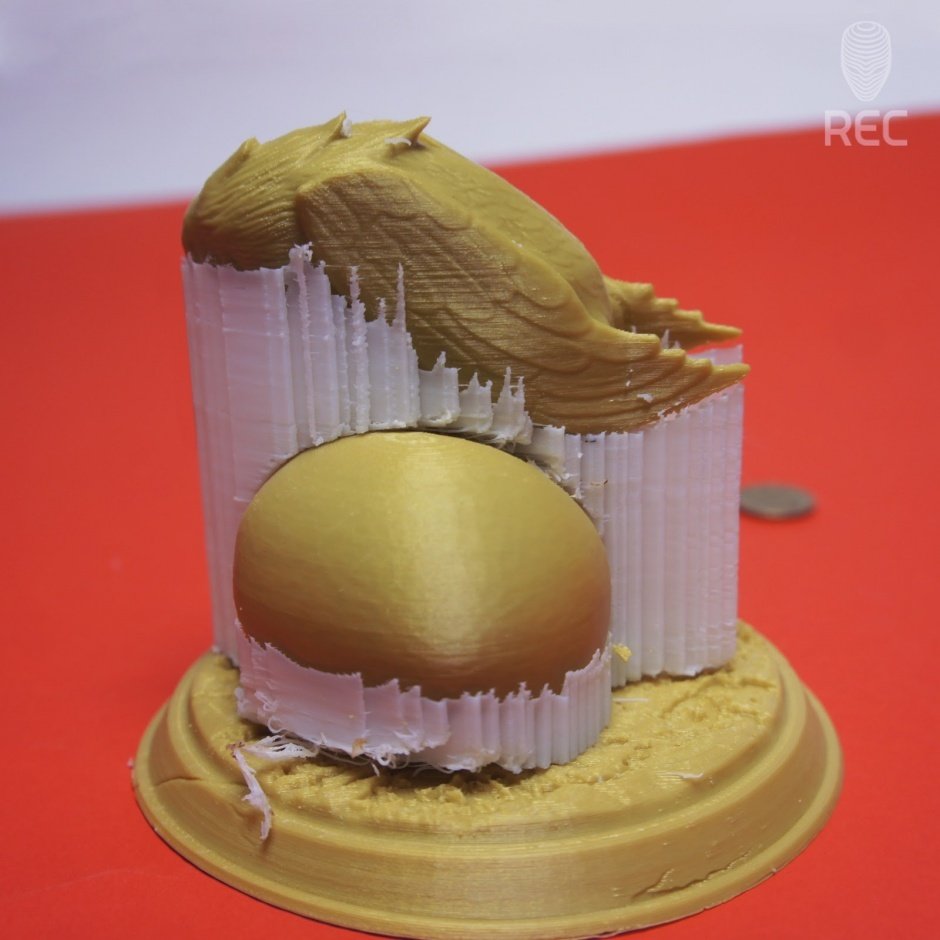


] Image “/>

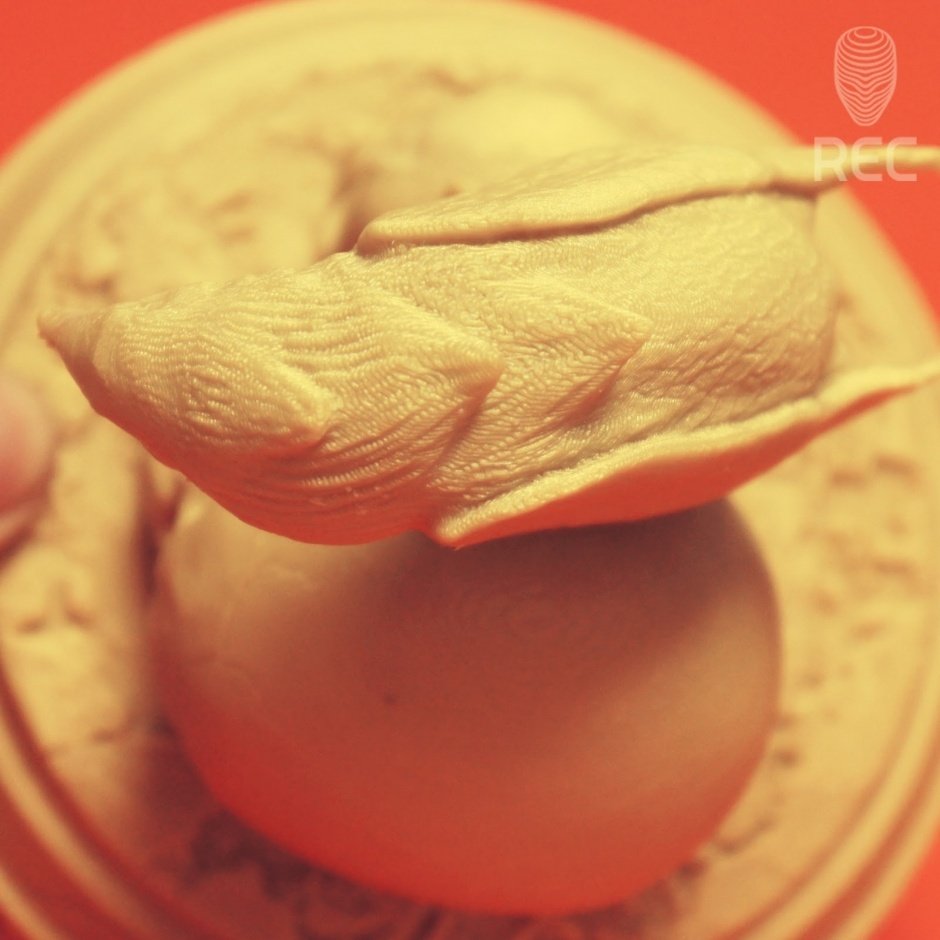
The printing time is 16 hours. Layer 0.15 mm.
As you can see from the photos – the printer prints very confidently and qualitatively with a large number of materials. Unfortunately they do not include REC RUBBER – for this extruder the bar turns out to be too soft and it is not possible to correctly set up the print to get a stable result.
As for the calibration of nozzles – this is quite simple on this printer (there is only one bolt for this, which corresponds to the height of each nozzle from each other) compared to other printers with a similar layout of extruders.
Just park the printer to zero, unscrew the screw holding the right nozzle, and when it pulls out and touches the table – tighten it back.
Identified one printing problem, which we will discuss below.
1) Two extruders with a filament guide, you can print a variety of different filaments
2) A large table with a good Z axis
3) Stylish case with a rigid frame
4) Incredibly steep display with the ability to track progress
5) Many yosb hubs
6) Good and convenient software
7) The printer is very noob friendly
8) Reliable packaging, configuration and instruction
9) Built-in battery and memory, when the power is turned off, the printer remembers where it finished printing. When the power returns, the device will continue to print, as if there was no interruption.
10) The printer is quite quiet, as it is assembled on a meringue of good components.
11) It is possible to connect via the Internet and search for models
Cons
1) The printer is slightly less stable in its result than would be desirable, often when printing the motors of printers on the print The head is heated so strongly that the bar is softened. Thus, it stops pushing into the hot-thread and the printing process stops correctly. This is more often on PLA plastic than on ABS and PET-g, but with them it happens. An additional cooling of the extruder motors is necessary, since they are heated to 60-70 degrees, and sometimes more.
2) USB flash drives stick out very hard, it’s easy to touch – break the port and break the seal
3) There is a small bug with the display of the printing process on the monitor, if there is a column for cleaning nozzles, the progress of the model is not shown or is very late, failure does not always happen and it is not proved that this is not a problem of our specimen.
4) Comparatively low printing speed due to a heavy print head, although the printer can not be called slow.
5) Weak blowing for the part, with PLA plastic when printing small models at low speed PLA flows around.
6) The power wires to the extruder itself fly out of the fasteners, despite the nice corrugation, not critical but unpleasant.
7) The unevenness of the magnetic clamp on the door of the printing chamber is a little annoying, this is certainly nitpicking, but considering how often one has to deal with the door, you pay attention to this.
Conclusion
Chinese The Raise 3D N1 Dual printer can be called a new generation 3D printer because it sets a kind of bar: “high-quality touchscreen, closed case, two extruders, autonomy of restarting, convenient software.” At the same time, technically the printer is a set of well-executed And well zarek The technical solutions that have been cleared up are the simplest system for the operation of two nozzles, a kind of synthesis of a bowden and direct extruder, kinematics from Ultimaker.
The device has proved to be almost an omnivorous printer capable of solving many problems.
By right, universality is one of the distinguishing features of this.
Certainly, this model was not without some drawbacks, but they are not enough, the same concerns software.
3D printer Raise 3D N1 Dual perfectly suits both professionals and all beginners, it provides quite a lot of versatile features and is very easy to use thanks to the software and the interface on the device itself.








